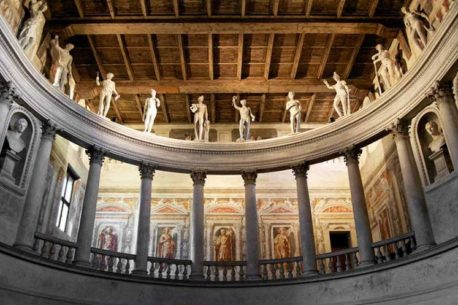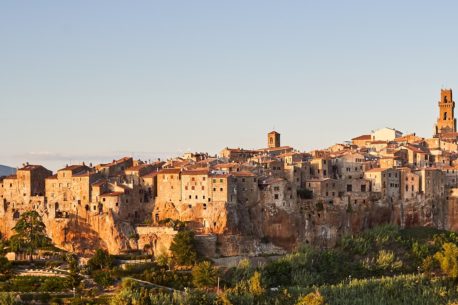
This iconic and wonderful city includes within its boundaries one of the largest ghettos ever built which can be defined almost as a city within the city.
The ghetto is part of one of the Venetian districts called “Sestiere di Cannaregio” – “Sestiere” from the Italian word “sesto” meaning one sixth – in which many Italian towns and cities like Venice used to be divided in what today would be called districts or neighbourhoods. This is the most densely populated Venetian district which makes it also very interesting to visit because it is one of the least touristic areas of Venice. Therefore, here the charm of Venice can be best appreciated while walking along its alleys, streets with neighbourhood shops selling anything from every day products to vintage and handicraft items.
The Venetian ghetto is the very first ghetto established in Europe in 1516, about 500 years after the arrival of the first Jews in Venice in the XI century. The term “Ghetto” most probably comes from the word “gheto” which in the local dialect means “foundry”. In fact many foundries were active in this area until the end of the XIX century. The ghetto was connected to the rest of the city by two bridges. In the morning, these were opened at the first rings of the “marangona”, the largest bell of St. Mark’s cathedral, and locked in the evening. Permanent, round-the-clock surveillance of the gates occurred at the Jewish residents’ expenses.
The best way to enter the ghetto to start our tour will be through the gorgeous Ponte delle Guglie: nowadays it is a lively and busy district where we can still find the Jewish religious and administrative institutions, the Jewish Museum where on display you can find artifacts through which the history of the local Jewish community is explained. Five beautiful old Synagogues, some of which we will be visiting and, if possible, even attend Shabat services in one of them: the German/Ashkenazi (the Scuola Grande Tedesca), the Italian (the Scuola Italiana), the Spanish and Portuguese (the Scuola Spagnola), and the Levantine Sephardi one (the Scuola Levantina).
Moreover, the ghetto has many little charming shops and kosher restaurants for you to enjoy lunch or a snack.
After the ghetto we will be walking along the city’s canals and its bridges to visit some of the main attractions Venice has to offer to its visitors.

Model of the Renaissance “ideal city”, called the “Small Athens” of the Po valley, it is actually a “Small Rome” since it was conceived by its creator, the Prince and patron Vespasiano Gonzaga Colonna, on the model of the ancient Roman cities. Vespasiano, as Viceroy of Navarra in Spain, had already planned the city of […]

The small hamlet of Pitigliano is also known as “the small Jerusalem”, a clear indication of the fact that for many centuries the Jewish population was an integrated and welcomed part of the village and welcomed by the local population. The walls surrounding Pitigliano are of Etruscan origin and have been expanded and strengthened in […]